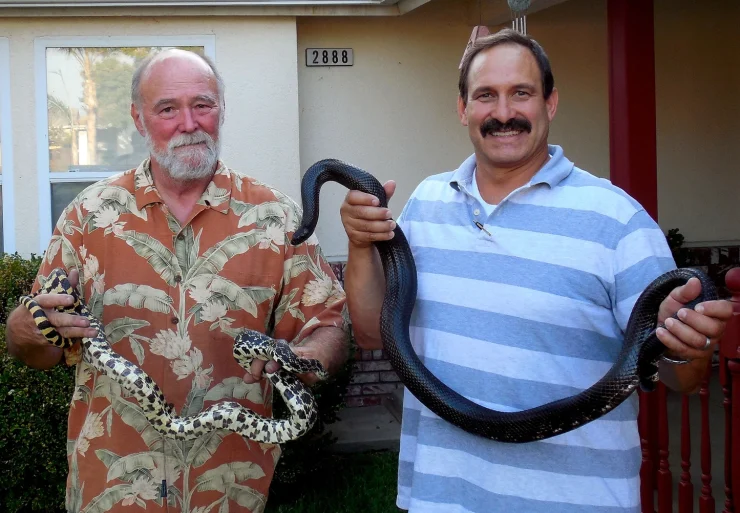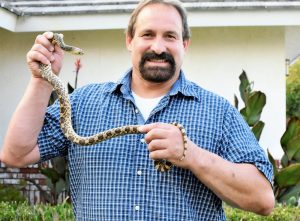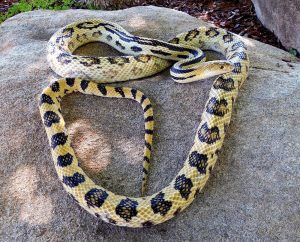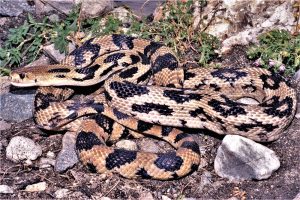Wild collected Kankakee County Hopkins Park Sand Pits in Illinois 2009
Photograph taken by Patrick Houston Briggs, Courtesy Dick Buchulsz
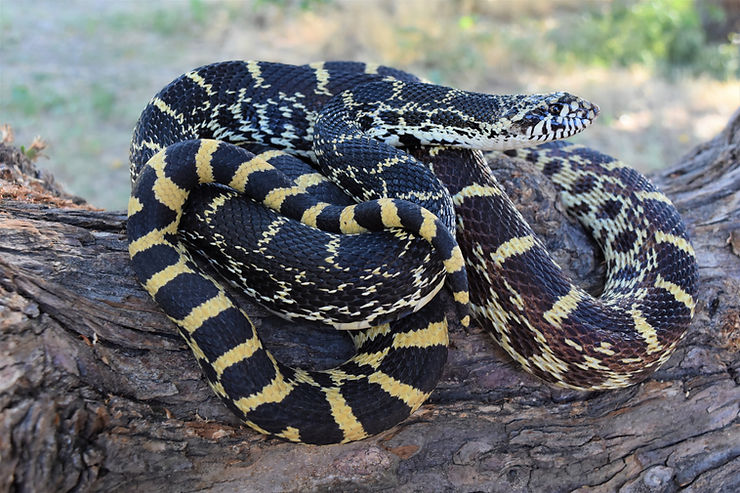
Pituophis catenifer sayi Wild Collected WC BULL SNAKE
from Kankakee County in Illinois FOUNDER Bi-colored named Michael.
Image By Patrick Houston Briggs Courtesy Dick Buckulzs
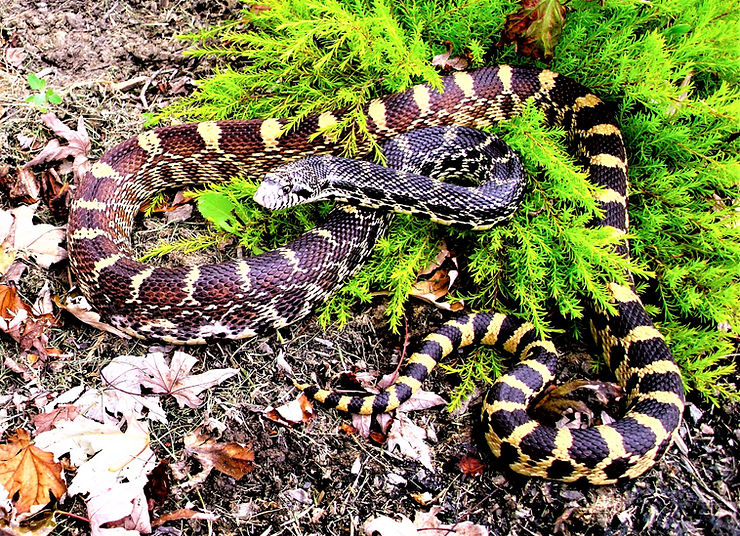
Pituophis catenifer sayi KANKAKEE BULL SNAKES both bicolor and tricolor WC adults.
Male below is tricolored named Michael. Founders wild collected in 2009. Female Shawna
Image by Patrick Houston Briggs, Courtesy Dick Bulchulzs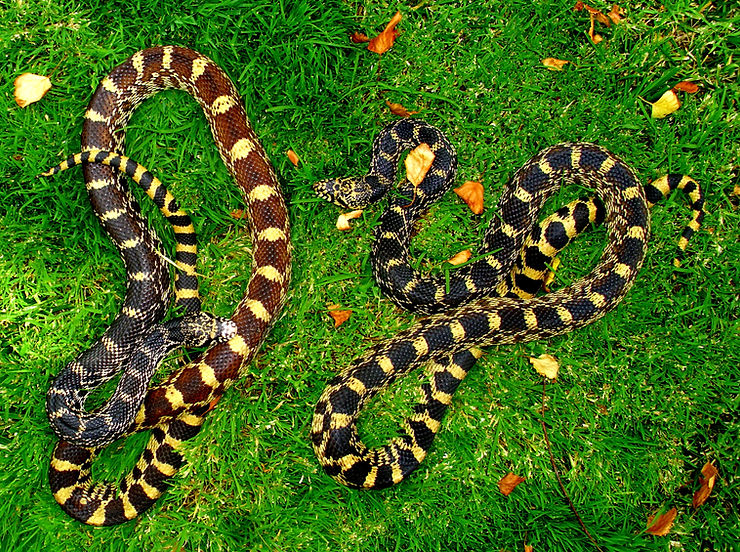
Pituophis catenifer sayi BULL SNAKES
By Patrick H. Briggs
The Bull Snake is truly a magnificent animal. The first one observed and recorded seems to be August 5, 1804, near the mouth of the Niobrara River in Nebraska. This nonvenomous reptile grows to be a powerful constrictor that usually feeds on several varieties of rodents, birds, their fledglings and eggs. When it is dry, cold or when the temperature is extremely high, these ophidians can become quite fossorial. Ideal temperatures, high precipation, and abundance of surface food can motivate them to move about above ground. If surprized or aggitated, they will shake their tails, lift up their head while flattening it, and sound the most intimidating hissing, and subsequently, lunge forward for the strike hoping to scare off the intruder. The hisses were compared to a bull’s bellowing long ago and so they received their common or vernacular name, “bull snake”. Some exceptionally large individuals in the wild can reach lengths being upwards to 8 feet, but usually they grow to about 5 or 6 feet in the wild.
Pituophis catenifer sayi as it is known in the scientific world, receives its subspecific epithet sayi which was taken from a latin modified form of Thomas P. Say, who was a natural scientist and explorer for the Academy in Philadelphia in the early 1800s.
Robert C. Stebbins on the left in the mid 1990’s, herpetologist, biologist, nature artist, author of several nature books and scientific papers with Patrick Houston Briggs on the right.
reports 33-66 black, brown, or rusty body blotches and 9-19 black tail spots. The base of each light interblotch scale usually darkened. The ground color is pale to light yellow and the nape of the neck is heavily spotted with black. There are 29-37 midbody scale rows.
The bull snake’s range is vast, and it occurs from southern Alberta, Canada west to eastern central Idaho, and east to western Indiana and south to northeastern Mexico. Because of its wide geographical range, this race varies in pattern and color corresponding to each region. In many natural areas where it occurs, its ground color is beige or light tan with the upper neck and tail region’s blotches, spots, or markings being darker than the upper midbody’s and those markings outlined with an even darker border.
Distribution: Pituophis catenifer sayi: Canada (S Alberta, S Saskatchewan), USA (Montana, SW North Dakota, South Dakota, Illinois, Indiana, Colorado, Wyoming, Kansas, E New Mexico, Minnesota, Nebraska, Oklahoma (BURT 1935), Wisconsin, Texas), Mexico (Chihuahua, Coahuila, Tamaulipas); Type locality: Missouri.(W Indiana and Wisconsin to S Alberta, south to Texas and NE Mexico; isolated records from NE Texas)
One of my favorite natural occurring morphs (phenotype) occurs in northeastern Illinois near the border of Indiana and into Indiana, from the village of Hopkins Park sand pits in Kankakee County of Illinois and adjacent Newton of Jasper County Indiana. Individuals from this area sport rich black necks and tails with some thin chain-like light colored bands to separate the vertebral blotches that also deliniate the spots, lines, or markings along the sides. The mid-body upper blotches from those indigenous to this area are sometimes a light or dark reddish-brown, but they can also be nearly as black as the rest of the body. I’ve successfully bred and produced this morph from snakes collected from this area many times, even producing two clutches in the same year.
Pituophis catenifer sayi BULL SNAKE 1.0 Founder
wild collected 2009 Kankakee County Hopkins Park Sand Pits In Illinois
Photograph taken by Patrick Houston Briggs, Courtesy Dick Buchulsz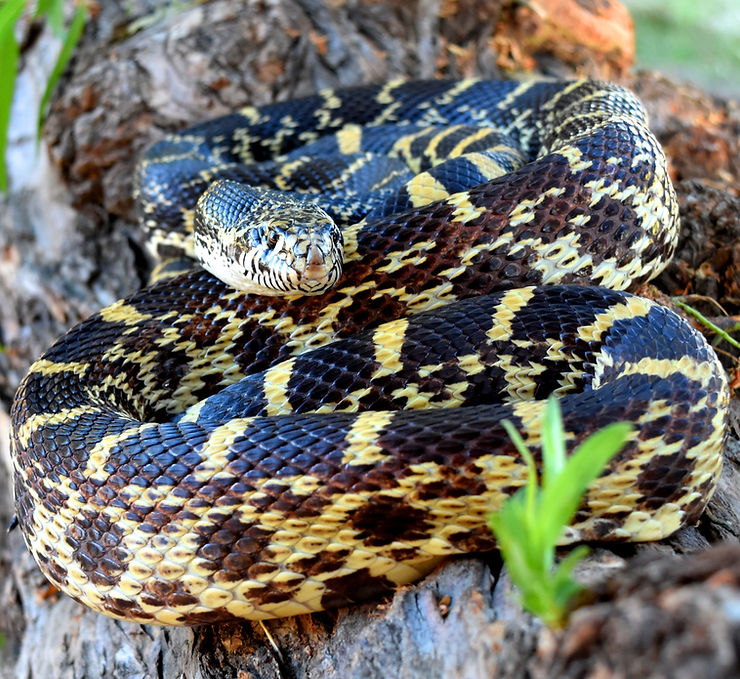
wild collected 2009 (Founder) Kankakee County Hopkins Park Sand Pits In Illinois
Photograph taken by Patrick Houston Briggs, Courtesy Dick Buchulsz
wild collected 2009 Kankakee County Hopkins Park Sand Pits In Illinois
Photograph taken by Patrick Houston Briggs, Courtesy Dick Buchulsz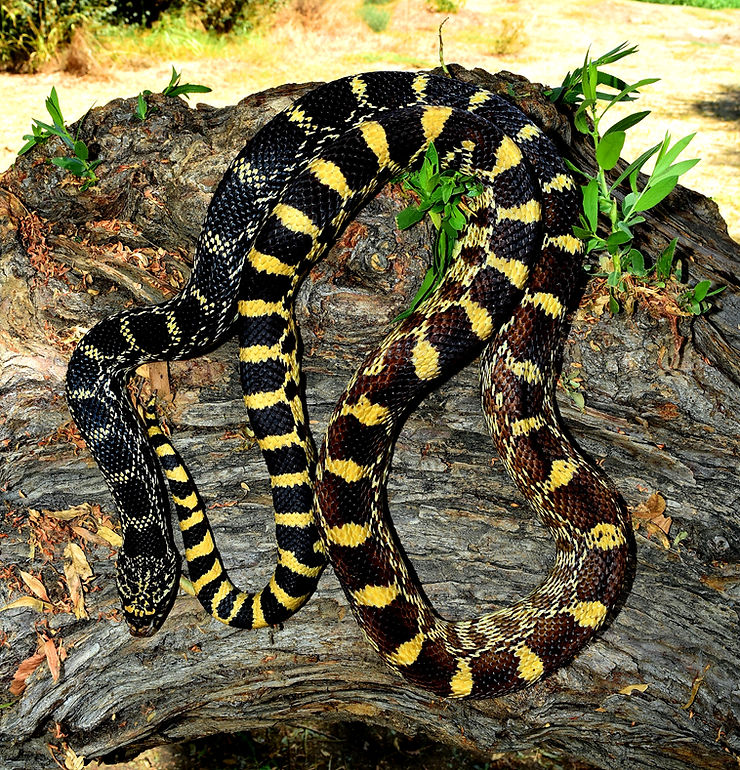
wild parents collected Kankakee County Hopkins Park Sand Pits In Illinois
Photograph taken by Patrick Houston Briggs, Courtesy Dick Buchulsz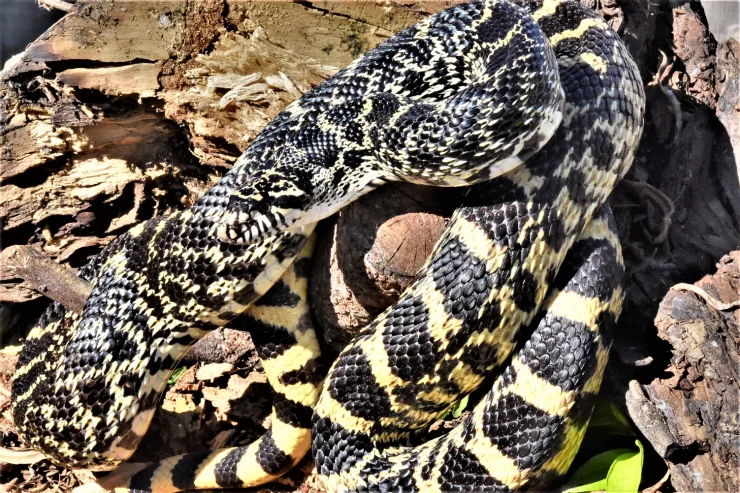
Another morph that I enjoy just as much is a red morph which also comes from several localities such as Kingville in southern Texas, and comes in different pattern types. Breeders are mixing red individuals from varying localities to maximize the vividness of red in subsequent offspring. Those occupying natural localities in the wild are sometimes a beautiful red while others of the same locale remain beige and brown, or they may be somewhat red. Aditionally, many of these snakes hatch with drabby color, and the red or orange intensifies with maturity. Others, are born with a small amount of orange or red or a blend of yellow suffused with a powdery reddish coloration that seems to bursts more vividly with reddish-orange every time they shed. Whatever the color or pattern of the locality, each individual with its respective morph will exhibit extremely different patterns at each end of its own body, each end looking as if it were composed of two or three different bull snakes at different points down the length of the same snake.
As previously mentioned, because of its great range and different habitat types, the ground color of the more common localities is quite varied and may be pale yellow, tan, creamish, or reddish with the nape coloration darker or even black slightly mixed or suffused with light ground color. Per Olive Stull, dorsally, from the neck to the vent, there may be 33-68 black, gray, brown, or rusty body blotches that may be 2-5 scales long and 9-12 wide. Past the vent above, there are 8-20 dark tail spots, as documented so thoroughly by the late herpetologist, Olive Stull. She recorded the light interspaces usually being 1-4 scales long. She also comments that these interspaces occasionally have a narrow median dark transverse streak and also that frequently the light scales, as well as the light scales of the sides, each bear a small median or anterior spot. Along the sides, there are also 3 or 4 series of dark spots that alternate with one another and also the dorsal series, and often fusing one with another, and with the median series at the edges forming a kind of what she calls a “syncytium”, a coming together or fusion, especially at the anterior portion of the body. The belly may be pale and heavily or slightly marked, but there is nearly always a series of black spots along the edges separated by 1-4 belly scutes. The top of the head carries the ground color that is sometimes slightly rosey, and it is dappled or marked with black. The rear of the head and nape have a dark spot on nearly every scale. Black markings or streaks mark nearly all or every suture of the upper and lower labials. At the front of a pointed snout is the rostral which is much higher (longer) than wide, and raised or “cornified” well above the nearby scales. As this is a fossorial (ground dwelling) ophidian, this re-enforced rostral facilitates burrowing and moving earth. Running from the back of each eye to the angle of the jaw, there is usually a dark stripe sometimes bordered above and below with a lighter edge or bar. Either the 4th, 5th, or 6th supralabial enters the eye.
Length:
Bull Snakes generally grow from 37-72 inches (94.8-183 centimeters). A record of 100 inches has been recorded by Conant and Collins (1998). Bull snakes along with other Pituophis are becoming more and more popular to collectors and in the pet trade. I’ve seen these animals in captivity under ideal circumstances for growing to have already exceeded the wild length record. They are displayed from time to time with their keepers online.
Another change occuring with bull snakes in captivity is that many of the natural patterns from the offspring of specific locations that attracted the first collectors and breeders are now struggling to compete as money makers in the pet trade as more extreme and beautiful patterns and other aberrant forms arise. These morphs are sold under many different marketing names that reflect the morph in one way or another. They may reflect the name of the breeder with his bloodline type, or a location of the first parent stock, even a highway where similar morphs are found, or it may just describe the pattern morph or phenotype. Some of these morphs are already sold by the following names:
See the Dav Kaufman list on Bull snake morphs below.
Current Market Morphs:
1-Albino 2-Red Albino 3-Patternless 4-Red 5-Albino Patternless 6-Red Albino Patternless 7-Whitesided 8-Albino Whitesided Snow 9-Hypo Whitesided Ghost 10-Hypo Whitesided axanthic 11-Patternless Hypo Whitesided Patternless Ghost 12-Patternless Whitesided Lavendar Ghost 13-Patternless Albino Whitesided Blizzard 14-Patternless Whitesided 15-Albino Patternless Whitesided 16-Hypo Stillwater 17-Hypo Iowa 18-Red Hypo 19-Hypo Patternless 20-Hypo Albino Hybino-Sunglow 21-Hypo Albino Patternless Sunglow 22-Axanthic Miami Co 23-Axanthic Omaha 24-Axanthic Patternless 25-Axanthic Hypo Patternless Pewter Bulls 26-Axanthic Whitesided 27-Axanthic Patternless 28-Hypo Axanthic 29-Snow Axanthic x Albino 30-Hypo Snow Moonglow 31-Whitesided Patternless Lavandar Ghost 32-Ivory Iowa Hypo Whitesided 33-Lavandar Ghost 34-Axanthic x Hypo True Ghost 35-Red Whitesided Sunrise 36-Granite 37-Double Albino Granite 38-Fire Bulls Kingville Red x Stillwater Hypo
Coming in the Future: 39-Patternless Lavandar Snow 40-Patternless Moonglow 41-Hypo Whitesided Axanthic 42-Patternless Hypo Whitesided Patternless Ghost 43-Stillwater Hypo Patternless 44-Patternless Fire Bulls
Locality Bull Snake Morphs: 45–Kankakee Bulls Black Bulls 46-Yellow Bulls 47-HWY 277 Bulls or “Monster Bulls” growing near 10 feet long 48-Dwarf Bulls Red Lodge Montana 49-Spring Green near Madison Wisconsin
Breeding Bull snakes
Identifying the gender of a bull snakes is accomplished through the use of a probe that is lubricated and subsequently and carefully slid into the vent at one side or the other directed toward and inside one of two tubular pockets in the tail that go as deep as 8-16 subcaudals in males and only 2-3 in females. These pockets are the hemipenes in males and the hemipenial homologs in females. A stainless steel probe about 1/4th in diameter (thickness) to the length of the anal plate usually is appropriate for bull snakes. To avoid ophidian injuries, only those experienced should use the cloacal probing technique. An obvious note is that to gain that experience, the one without experience can learn from and assist the person who has done it before many times successfully.
In order to successfully breed bull snakes, you must first think ahead and make decisions accordingly. Which snake or snakes will you be breeding with which others? Do you need to put a different male in with the female than last year for a new gene pool, or are you breeding back into this years clutch a relative for a desired or selected trait? Whatever your goal or plan is, remember that the females should be at least 2 years old with enough girth to survive the “cooling period” of brumation and be ready for breeding shortly afterward. Although the males need not be as heavy as the females to breed, they need to be healthy, mature, and large enough to be successful.
Stop feeding those selected breeders that are healthy and ready and begin dropping the temperature to 65-70 degrees for about a week sometime in November. Besides the substrate, keep only water in the vivarium, enclosure, plastic sweater box, or whatever it is that you use. This allows them to clear out their gut of food wastes and stay hydrated before the dormant period of brumation. Also, keep water in the brumating enclosure or container during the whole cooling period.
Captive bull snakes do not need to brumate, and young snakes are better off not brumating so that they can eat and grow, but adult bull snakes are more receptive to breeding in the spring time if brumated.
The second week drop the temperature another 5 degrees or so to about 60-65 degrees and the third week another 5, to 55-60 degrees and finally, sometime in December, keep the room dark and drop the temperature to 50-55 degrees Fahrenheit until about mid February before starting the warming process for females, and near the beginning of March for Males (about 3 months cooling period).
At first, bring the temperature up to about 70 degrees for about 5 days and then to about 75-80 degrees for a couple days and feed them a small meal such as an adult mouse or a mouse-sized rat. Continue this every 3 days or so and after the males have digested their first meal and have shed their skin.(remember that they were warmed about 2 weeks later than the females), When you put them together as pairs to mate, observe how interested the male is in the female. Before doing this, you may choose to put a different male’s shed skin or some shavings from another male’s cage in with the breeding male’s female. The other male’s scent sometimes triggers a stronger breeding response from the true male. Leave the males in with females all day, but take them out each day for a week. Make sure you have seen them court or mate “hook up” at least once before you stop putting them together. The male will attempt to line up his body perpendicular to the female’s. He will “twitch” or massage her back at different points with his belly muscles and press his tail base against one side or the other of hers just past the vent. He will next, wag his tail all over hers to further stimulate her and pursuade her to lift her tail, a sign that she’s willing to mate. If she is slow to respond, he subsequently, may grasp or bite the female’s head, neck, or body and not release his grip to get better leverage for copulation.
(Click to this site to see a male bull snake grasping the female’s head for leverage. It doesn’t seem to bother her, sometimes, she will seem to appreciate it.) http://www.flickr.com/photos/75273119@N00/508745909/in/photostream/
This also seems to stimulate or excite her to lift up her tail. The male also encourages her cooperation by rubbing curves of his body on hers and massaging her tail with his own shortly before penetration of one side or the other of his hemipene. They may stay connected only a few minutes or an hour, or even longer sometimes.They may copulate several times during the week.
Continue to feed the females as many smaller rats or mice as she wants to eat during the breeding and gestation period. If the food is large, she will most likely refuse it. During this period, much smaller prey is easier for her to digest, so she will be willing to take small food items more often. Even if she eats larger or her normal sized food, if the prey animals are too big for her body to accommodate her eggs and large food items, she may vomit them up a couple days later. Additionally, try to keep the temperature above 75 and below 85 degrees Fahrenheit; if it becomes too low or high, it could also cause her to spit up her food. As for the breeding male, he may not want to eat for awhile because his attention may be more focused on sex than food, but eventually, he will feed.
As she approaches the due date to lay her eggs, you will see her fill out towards the rear part of her body until her eyes begin to cloud up for a pre-lay shed. This is a good time to prepare an egg laying box with moist green moss, sphagnum moss or some other soaked and squeezed out substrate. I prefer a somewhat translucent plastic egg-laying box. I buy mine at the Michael’s craft store. Put a hole in the top or side a bit wider than her girth so that she can enter it and she will. Never leave a watering bowl in the cage around laying time. Sometimes a confused snake will deposit the eggs right into the water ruining every egg. About a month after she lays her eggs, you can begin feeding her the larger rats again.
In 2012, one of my Kankakee females that I call “Shawna-founder female #1” laid only one month after copulation. She was a wild collected Kankakee bull snake female that appeared to be when collected, a wild September hatchling from 2009. March of 2012, she would have been about 2 1/2 years old. I put her with a wild collected male from the same area that was about a year older that I labeled “Michael-founder male #1“. Before breeding, I began warming her up a few weeks before warming the male as I also do with other Pituophis and Lampropeltis species.
She copulated with (Michael fndr ml #1) on Wednesday March 7, 2012 and she deposited her first clutch of eggs on Saturday April 7, 2012 (31 days later). With natural incubation averaging about 81-82 degrees varying up or down some days, they hatched Saturday, June 2, 2012(56 days after eggs were laid or 87 days from copulation). The hatchlings were 14-16 inches long.
The following year she (Shawna, founder female # 1) was much larger andcopulated (with Schuyler founder male #2) on March 21, 2013. She laid 9-(3″ eggs) on May 3, 2013.. All 9 eggs hatched July 10, 11, and 12, 2013 (see hatching eggs below).. The hatchlings were large 171/4-191/2 inches long. The eggs were incubated at 80-83 degrees Fahrenheit. See eggs hatching below. These very fiesty neonates started eating 1-2 (3″ rat pups) at first and were eating adult mice only two months later! At the end of May 2014, one of the neonate females more than doubled its length and was measuring around 44 inches with nearly 1 month to go still to complete one year old!
Early in March 2014, I bred Shawna to Michael again and it seems that on April 22, 2014, she deposited 15 nice eggs. I fed her 3 or 4 mice twice within about 8 days and allowed her to digest both meals and subsequently, put Michael (f#1 male) back in with her. About a month later on Saturday, May 31, 2014 4:00 P.M., she deposited a second clutch this year of 13 healthy eggs. One egg is small but it appears to be healthy and good. She ate a few mice two days in a row but the following morning, probably due to complications after oviposition of the second clutch of eggs, she was found dead on June 3, 2014. On Tuesday, June 10, 2014, the first clutch deposited on the 22nd of April began to hatch and continued on the 11th and 12th of June 2014. Everyone of the eggs hatched again and these neonates were around 16 inches, healthy and plump but not as long as those produced from the other male (Schuyler). These neonates were also more passive and not so fiesty and nervous as those produced last year from the (Schuyler). The neonates of this clutch produced 8 males and 7 females that had their first shed all by the 21st, and 3 of them about to shed a second time. Those 3 only, possible hold-backs, were kept in a room at about 85 degrees nearly constant whereas the others were kept outside where temperature fluctuates from 70 to about 95.
Due to the growth of the eggs within her, the gravid female eventually will become quite large and her eyes will soon begin to cloud up indicating that she will soon molt. A day or so after the eyes clear up again, she will begin the pre-lay shed. Before this time, you should have already introduced her to the moist nesting box. If the substrate is not too wet and the temperature is appropriate, she will use the nesting box. Prior to oviposition of eggs, the female’s body will be thick posteriorly on her body. The eggs can usually be easily felt in her at that time. The gravid femele will usually lay the eggs in a clutch above the surface of the moist substrate provided within the week after the molt. After separating the eggs from the female, you may choose to leave the eggs in the nesting box for incubation or you may take the eggs out and place them separately in a different box with moist vermiculite or some other incubationing substrate.. Many breeders mix about 15-20% perlite to the vermiculite to make sure the mix doesn’t stick. I don’t, and don’t seem to be having problems. I have also used moist cypress mulch or no substrate ( a bare plastic box with a bowl of water for humidity) at all with success many times. If you handle the eggs, and choose to pull apart those that have stuck together, do it slowly and carefully. If you think by doing so that you might damage any of the eggs that seem stuck too tight, don’t do it, they hatch fine stuck together. Also, try to maintain the position of the eggs as they were laid. If you need to, lightly mark with a dot the egg tops with a permanent marker to assist you before removing them to another box and placing them with dots upward. Incubate the eggs at 80-85 degrees Fahrenheit. Place a small bowl of water in the corner of the box with the eggs to help keep up the humidity.They should hatch in about 8 weeks. Whenever all the eggs have looked good immediately after oviposition, I have nearly always had a 100% success rate of snakes that had hatched and that were healthy. When the eggs start to hatch, sometimes the little snakes remain in the eggs for a day or so. That allows them to soak up the remaining yoke fluid before they exit the egg completely. They will also have a duller color than normal until they shed the outer skin in about a week. Feed the neonates newborn “pinkie” rats or mice within a week or so.
Jerry Hartley with a Black Pine Snake and Patrick Briggs with a WC Kankakee Bull Snake.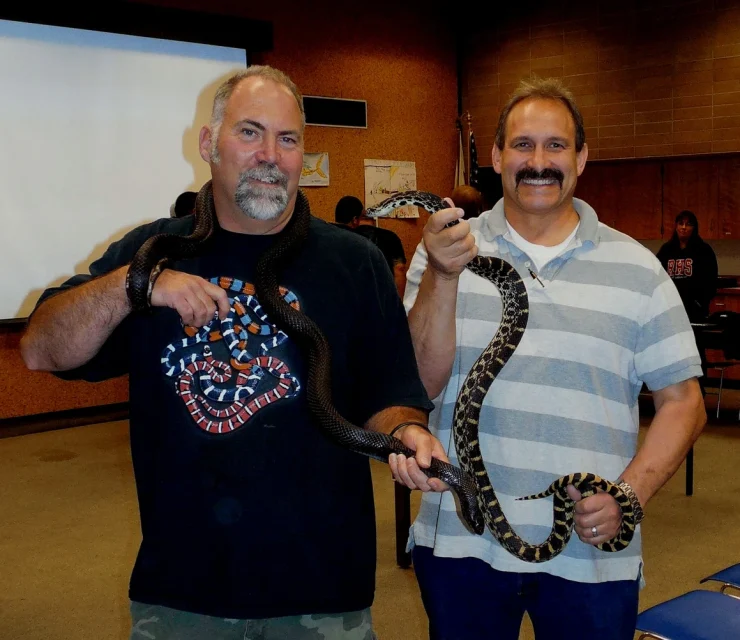
Teeth
Mandibles 17-21 becoming smaller in length toward the rear.
Maxillaries 16-17 also decreasing in size towards the rear.
Palantines 9-11 smaller than both the mandibular and maxillary teeth.
Pterygoids 9-13 even more smaller than the palantines and also progressively becoming smaller toward the rear.
Scutelation:
Rostral Nearly twice as long as broad and penetrating 1/3rd of the distance between internasals
(often present between frontal & prefrontal, or between postnasal and prefrontal)
Neck 25-35
Midbody Rows 28-37
Anterior To Vent Rows 21-27
Ventrals 212-244
Caudals 46-67
Anal Single
Azygos (If present, located between prefrontals, preocular, and postnasal)
Loreal Usually present, sometimes divided
Supralabials 7-10
Infralabials 10-15
Preoculars 1-3
Postoculars 2-5
Pituophis catenifer sayi Red Morph BULL SNAKE (Texas locality John Ginter breeding line) Photo By Patrick Houston Briggs
Pituophis catenifer sayi BULL SNAKE white sided morph captive bred
Image By Patrick Houston Briggs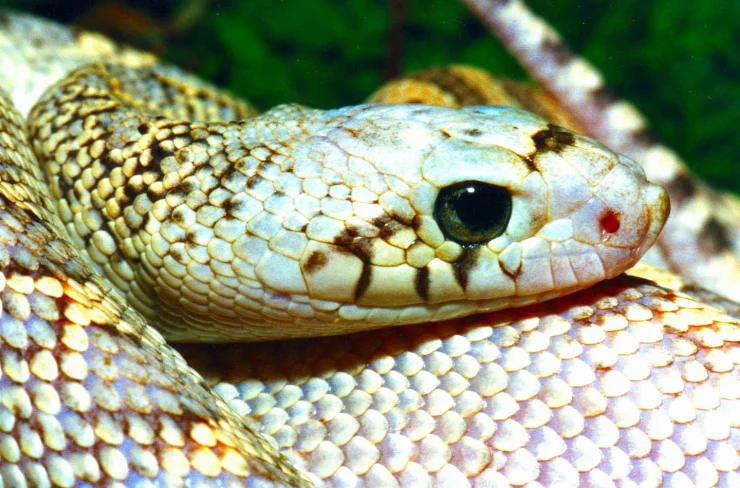
Image By Patrick Houston Briggs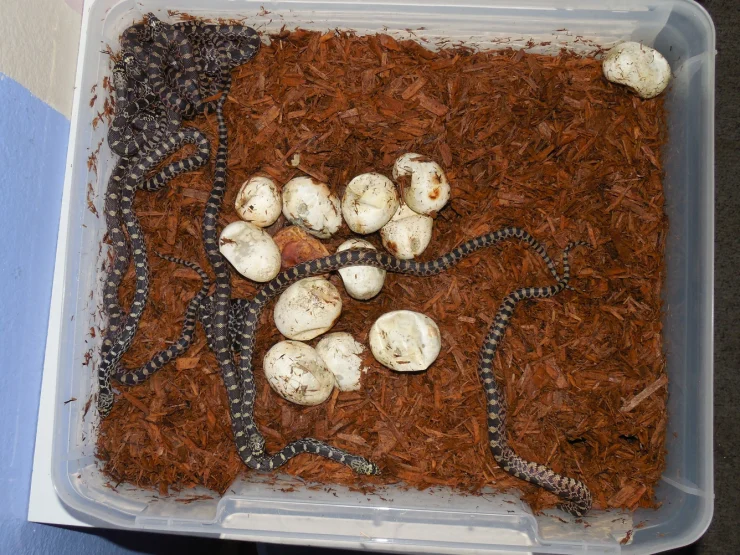
Pituophis catenifer sayi BULL SNAKE 1.0 (Founder) Michael
Wild collected Kankakee County Hopkins Park Sand Pits In Illinois 2009
Photograph taken by Patrick Houston Briggs, Courtesy Dick Buchulsz
Pituophis catenifer sayi BULL SNAKE 0.1
Captive bred Briggs and Trumbower lines Kankakee County locality
Photograph taken by Patrick Houston Briggs
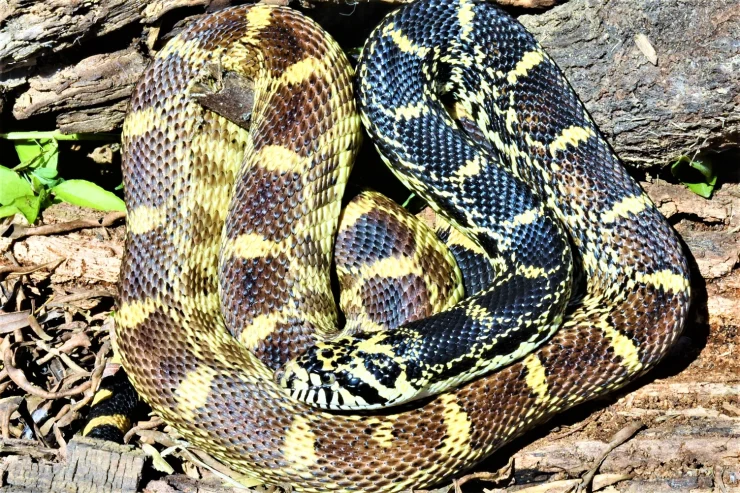
Pituophis catenifer sayi BULL SNAKE
Kankakee neonate f-1
Photograph taken by Patrick Houston Briggs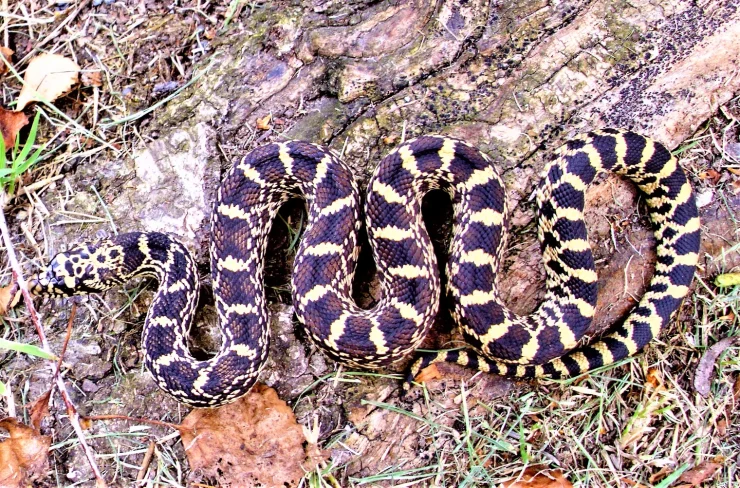
Pituophis catenifer sayi BULL SNAKE 0.1 f-1
Wild parents collected Kankakee County Hopkins Park Sand Pits In Illinois
Photograph taken by Patrick Houston Briggs, Courtesy Dick Buchulsz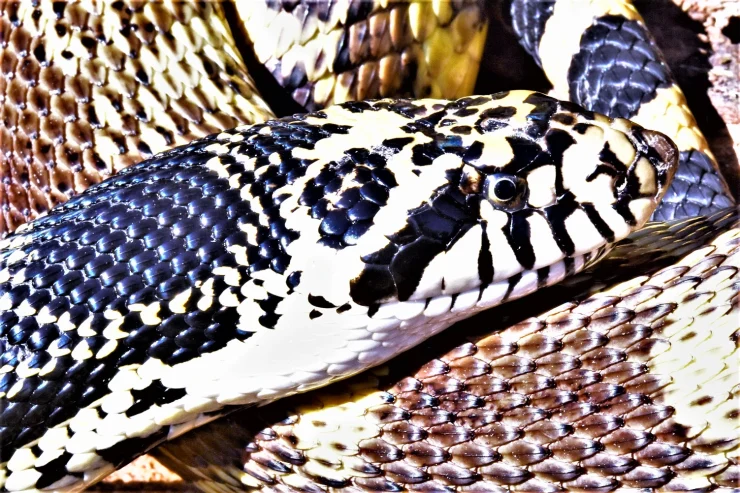
Wild parents were collected Kankakee County Hopkins Park Sand Pits In Illinois
Photograph taken by Patrick Houston Briggs, Courtesy Dick Buchulsz
Pituophis catenifer sayi BULL SNAKE 0.1 named Shawna below proven breeding Founder
Wild collected Kankakee County Hopkins Park Sand Pits In Illinois 2009
Photograph taken by Patrick Houston Briggs, Courtesy Dick Buchulsz
Wild collected Kankakee County Hopkins Park Sand Pits In Illinois 2009
Photograph taken by Patrick Houston Briggs, Courtesy Dick Buchulsz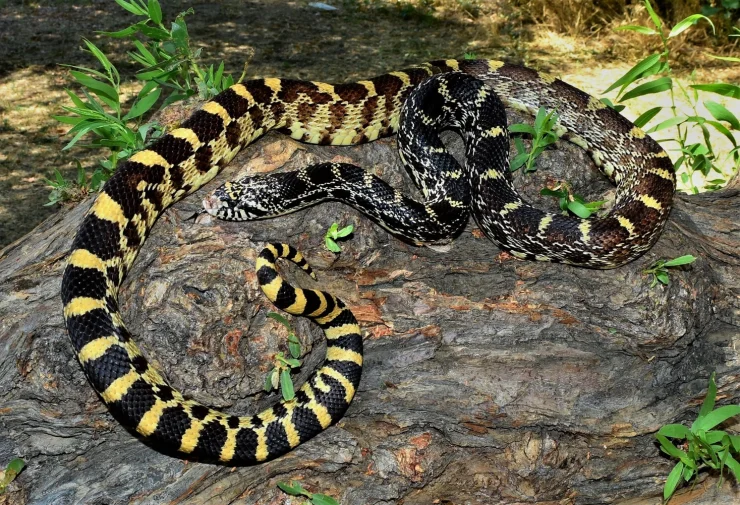
Pituophis catenifer sayi BULL SNAKE 1.0 Founder Schuyler
Wild collected Kankakee County Hopkins Park Sand Pits In Illinois 2009
Photograph taken by Patrick Houston Briggs, Courtesy Dick Buchulsz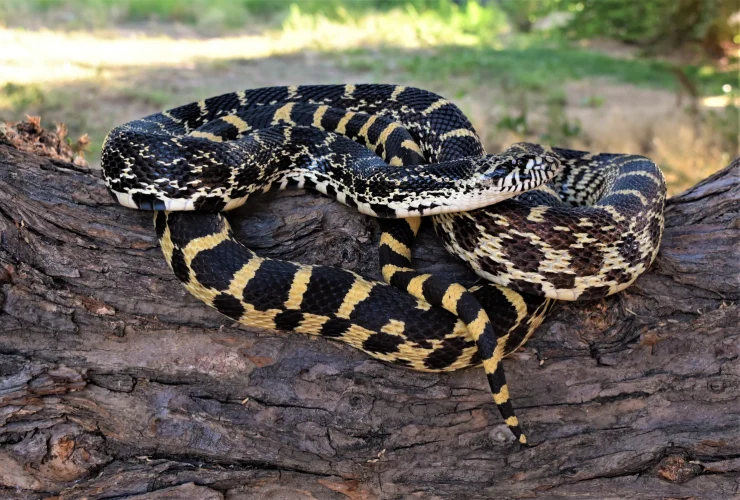
Pituophis catenifer sayi Bull Snake KANSAS LOCALITY
Image taken by Jeremy Huff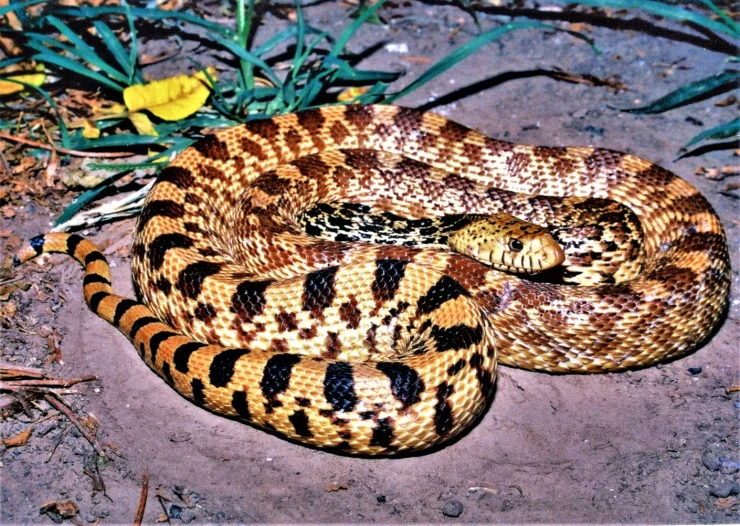
Pituophis catenifer sayi BULL SNAKE Red Morph Texas locality
Photograph taken by Patrick Houston Briggs, Courtesy John Ginter
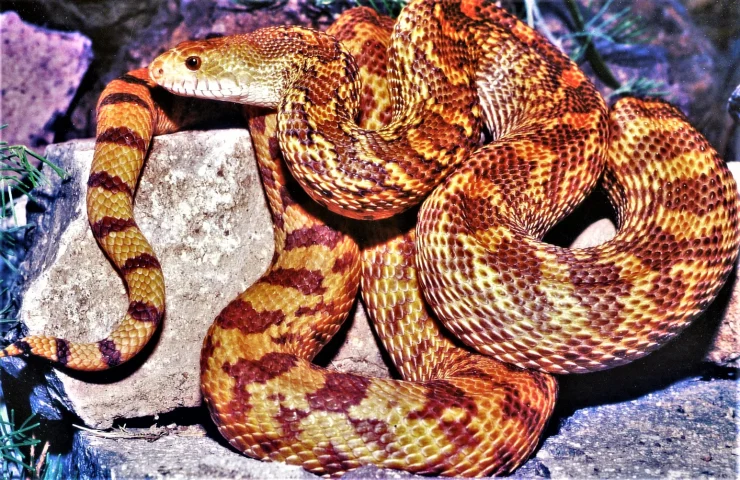
Pituophis catenifer sayi BULL SNAKE neonate f-1
Wild parents collected in Kankakee County Hopkins Park Sand Pits in Illinois
Photograph taken by Patrick Houston Briggs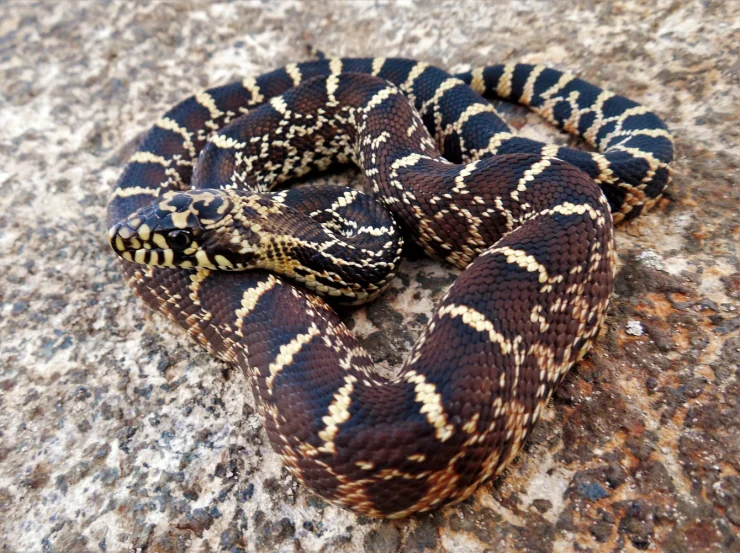
Pituophis catenifer sayi BULL SNAKE neonate f-1
Wild collected parents from Kankakee County Hopkins Park Sand Pits in Illinois
Photograph taken by Patrick Houston Briggs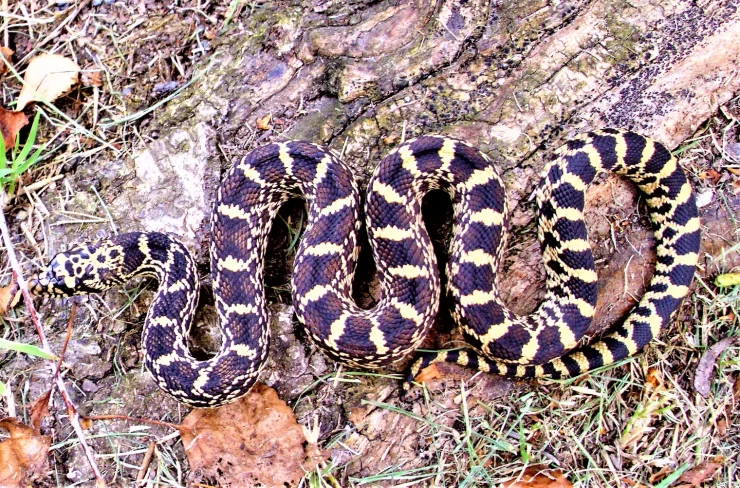
Pituophis catenifer sayi BULL SNAKE 1.1 FOUNDERS Tri-color male Bi-color female adults
Both founders wild collected Kankakee County Hopkins Park Sand Pits in Illinois 2009
Michael to left and Shawna to the right proven breeders double clutch several times.
Photograph taken by Patrick Houston Briggs, Courtesy Dick Buchulsz
Pituophis catenifer sayi BULL SNAKE 0.1 named Shawna below proven breeding Founder
Wild collected Kankakee County Hopkins Park Sand Pits In Illinois 2009 upper head view
Photograph taken by Patrick Houston Briggs, Courtesy Dick Buchulsz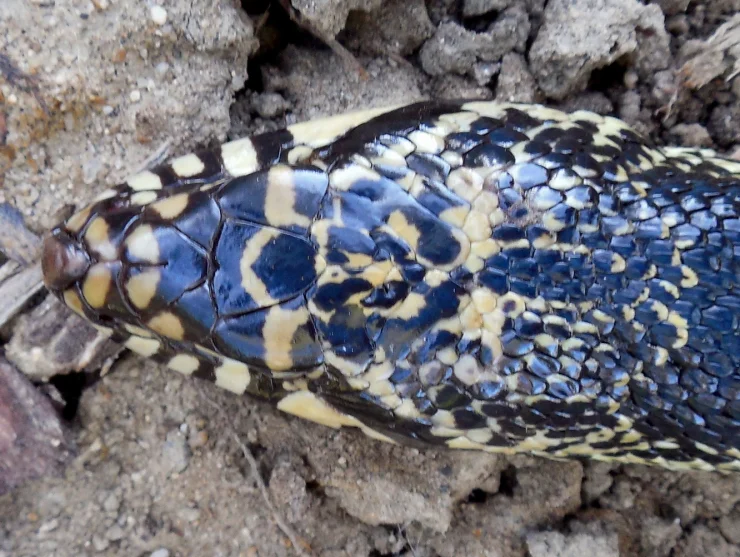
Pituophis catenifer sayi BULL SNAKE 0.1 named Shawna below proven breeding Founder
Wild collected Kankakee County Hopkins Park Sand Pits In Illinois 2009 chin and neck close
Photograph taken by Patrick Houston Briggs, Courtesy Dick Buchulsz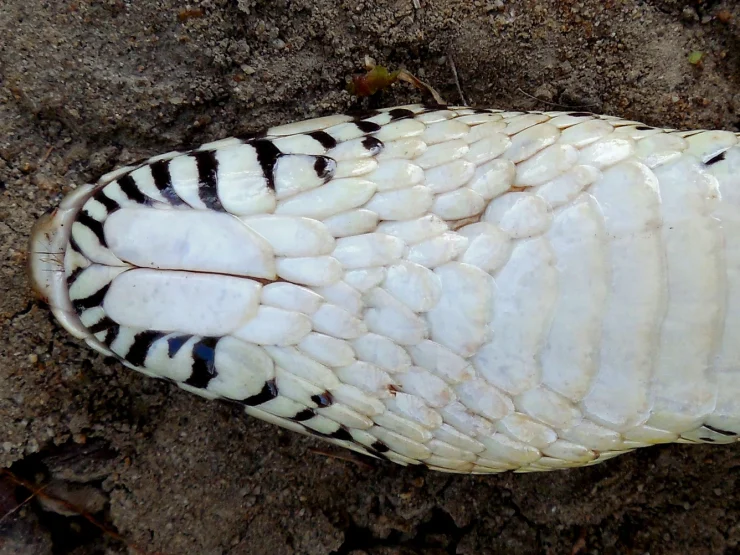
Pituophis catenifer sayi BULL SNAKE 0.1 named Shawna below proven breeding Founder
Wild collected Kankakee County Hopkins Park Sand Pits In Illinois 2009 right side head
Photograph taken by Patrick Houston Briggs, Courtesy Dick Buchulsz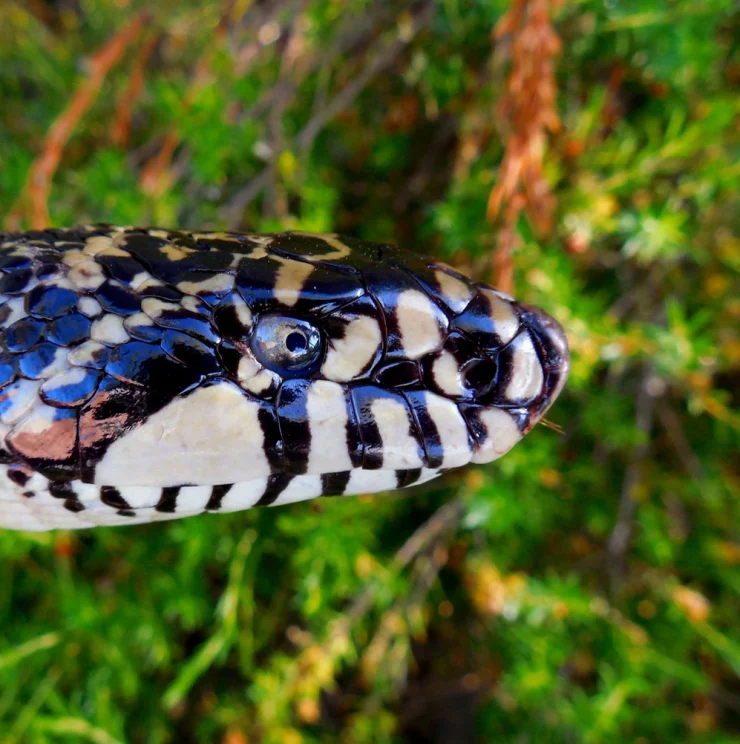
Pituophis catenifer sayi BULL SNAKE 0.1 named Shawna below proven breeding Founder
Wild collected Kankakee County Hopkins Park Sand Pits In Illinois 2009 left side head study
Photograph taken by Patrick Houston Briggs, Courtesy Dick Buchulsz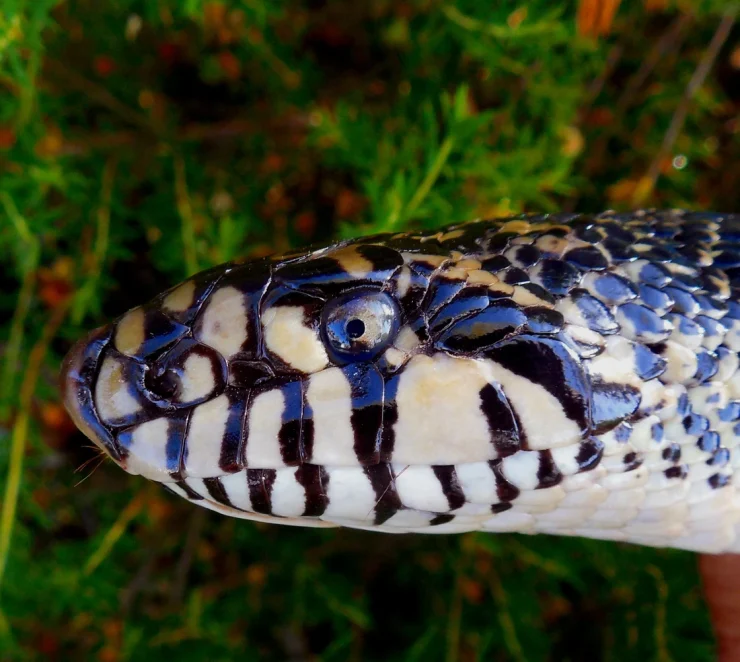
Dick Bulchulz on the left carries one of his wild collected Kankakee Bull Snakes and Patrick Houston Briggs on the right lifts up a Black Pine Snake around 2012.